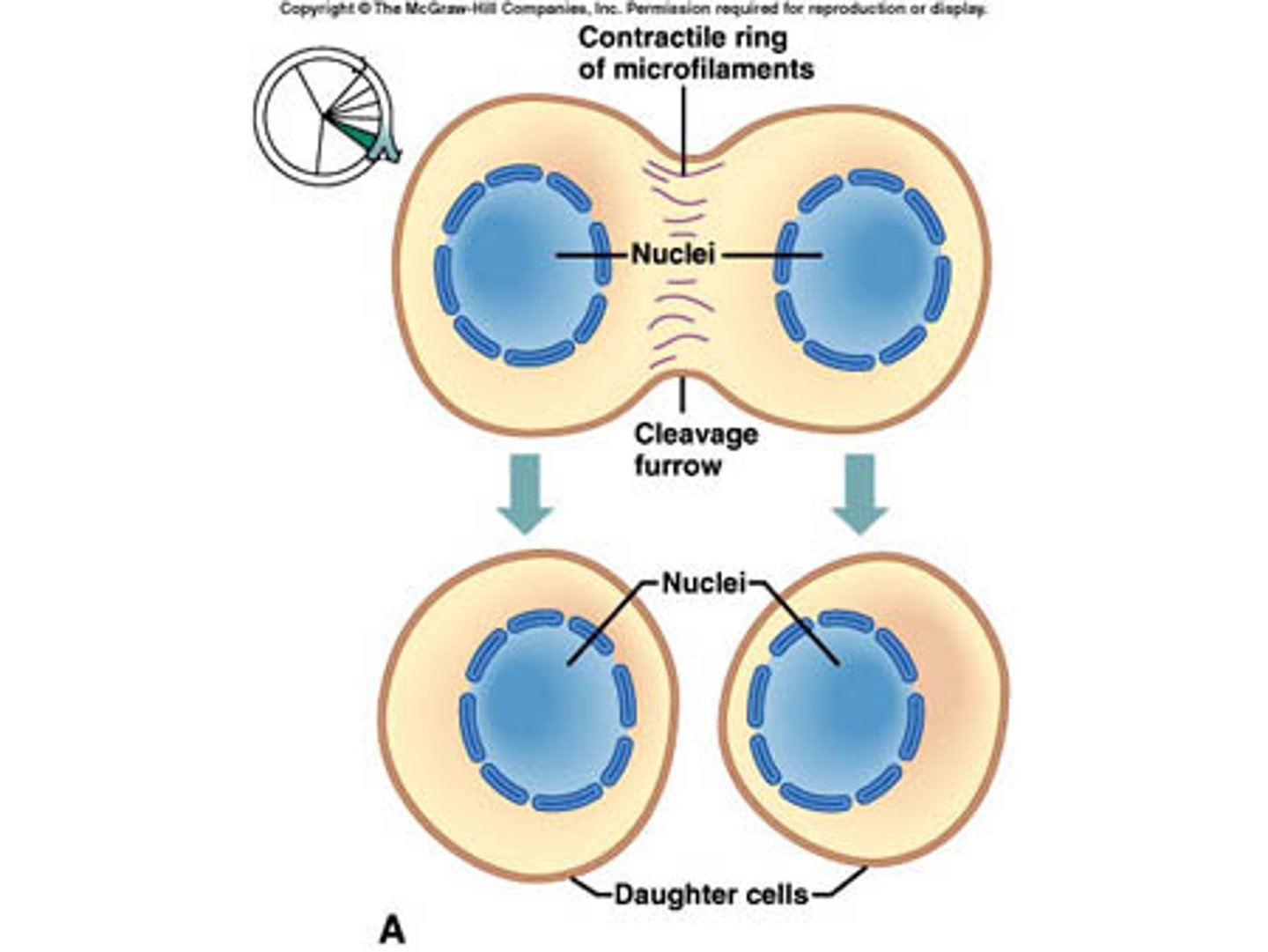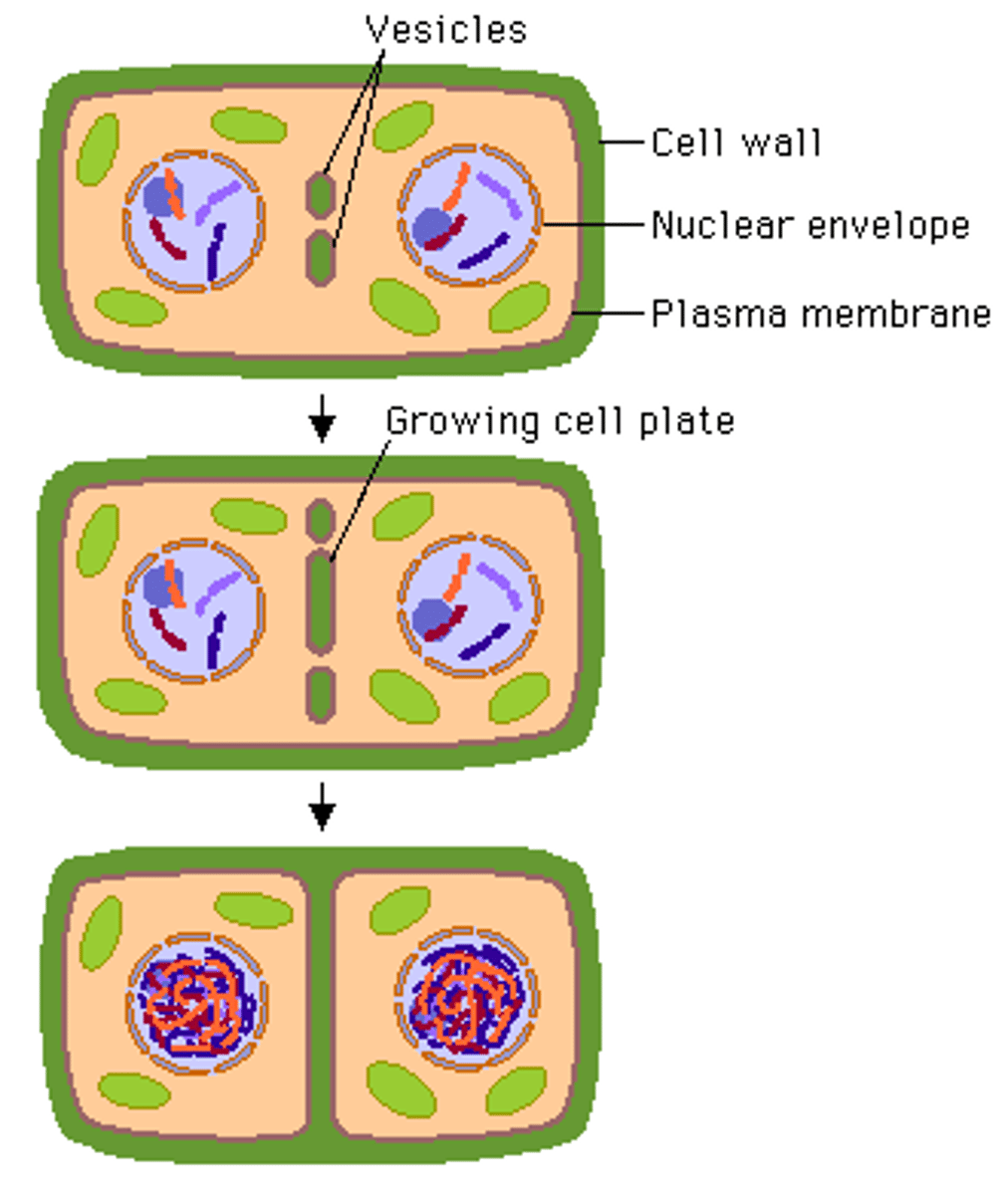D2.1 Cytokinesis
1/7
There's no tags or description
Looks like no tags are added yet.
Name | Mastery | Learn | Test | Matching | Spaced |
|---|
No study sessions yet.
8 Terms
How are new cells formed?
cell division: mitosis.
A parent cell, divides to produce two daughter cells.
Cytokinesis
division of the cytoplasm of the parent cell to form two separate daughter cells
cytokinesis in animals
A network of proteins (actin and myosin) form a cleavage furrow, which gradually deepens and splits the cytoplasm.

cytokinesis in plants
assembly of a cell plate, forming from the fusion of vesicles containing cell wall materials. The cell plate grows outwards until it reaches the existing cell wall, fusing with it and splitting the cytoplasm.

Equal cytokinesis
same amount of cytoplasm in both cells
Unequal cytokinesis
Occurs in oogenesis and budding
Oogenesis
Production of eggs.
Produces on very large oocyte and one small polar body.
The smaller polar body, ensures that the oocyte is big enough to contain all the necessary nutrients for the development of an organism in the fetus & survival of the cell.
Budding
A form of asexual reproduction of yeast in which a new cell grows out of the body of a parent.